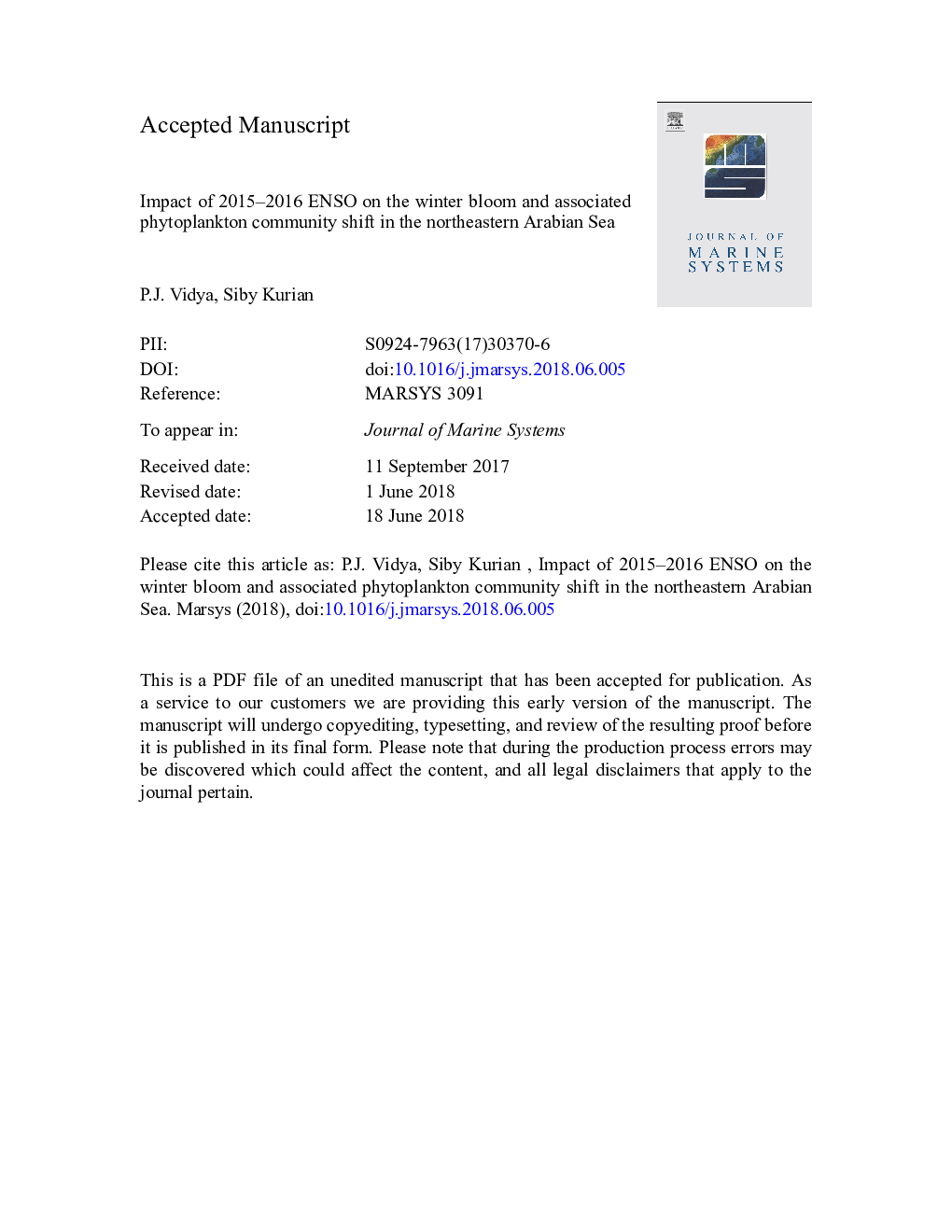| Article ID | Journal | Published Year | Pages | File Type |
|---|---|---|---|---|
| 8885916 | Journal of Marine Systems | 2018 | 26 Pages |
Abstract
The present study explores the impact of 2015-16 El-Niño Southern Oscillation (ENSO) on the winter phytoplankton bloom in the northeastern Arabian Sea (NEAS). In situ Chlorophyll a (Chla) from the bio-Argo float (2013-2016) and phytoplankton pigment data collected onboard R.V. Sindhu Sankalp (February 2013 and 2016) have been used to decipher the 2015-2016 ENSO modulated variability. During a normal winter, convective mixing deepens the mixed layer (ML) and increases the availability of nutrients in the euphotic zone. During the 2015-16 ENSO, the intensity of the convection (evaporation) was weaker than normal and this, in turn, weakened the convective mixing in the following winter. However, during the 2015-16 ENSO event, a warm core eddy deepened the ML further by pushing the nutracline downwards, thereby reducing the availability of nutrients. Changes in the physical condition during the 2015-16 ENSO altered the nutrient availability which in turn affected the Chla production and associated phytoplankton community structure. The Bio-Argo observations show 50% reduction in Chla during February 2016 compared to a normal year, which we attribute to the ENSO event of 2015-2016. Additionally, pigment data shows a reduction in the abundance of microplankton (diatoms and dinoflagellates) and an increase in abundance of picoplankton in the NEAS. Our results clearly indicate that 2015 ENSO played a dominant role in altering the phytoplankton community composition and in turn the productivity of the Arabian Sea.
Related Topics
Physical Sciences and Engineering
Earth and Planetary Sciences
Oceanography
Authors
P.J. Vidya, Siby Kurian,
